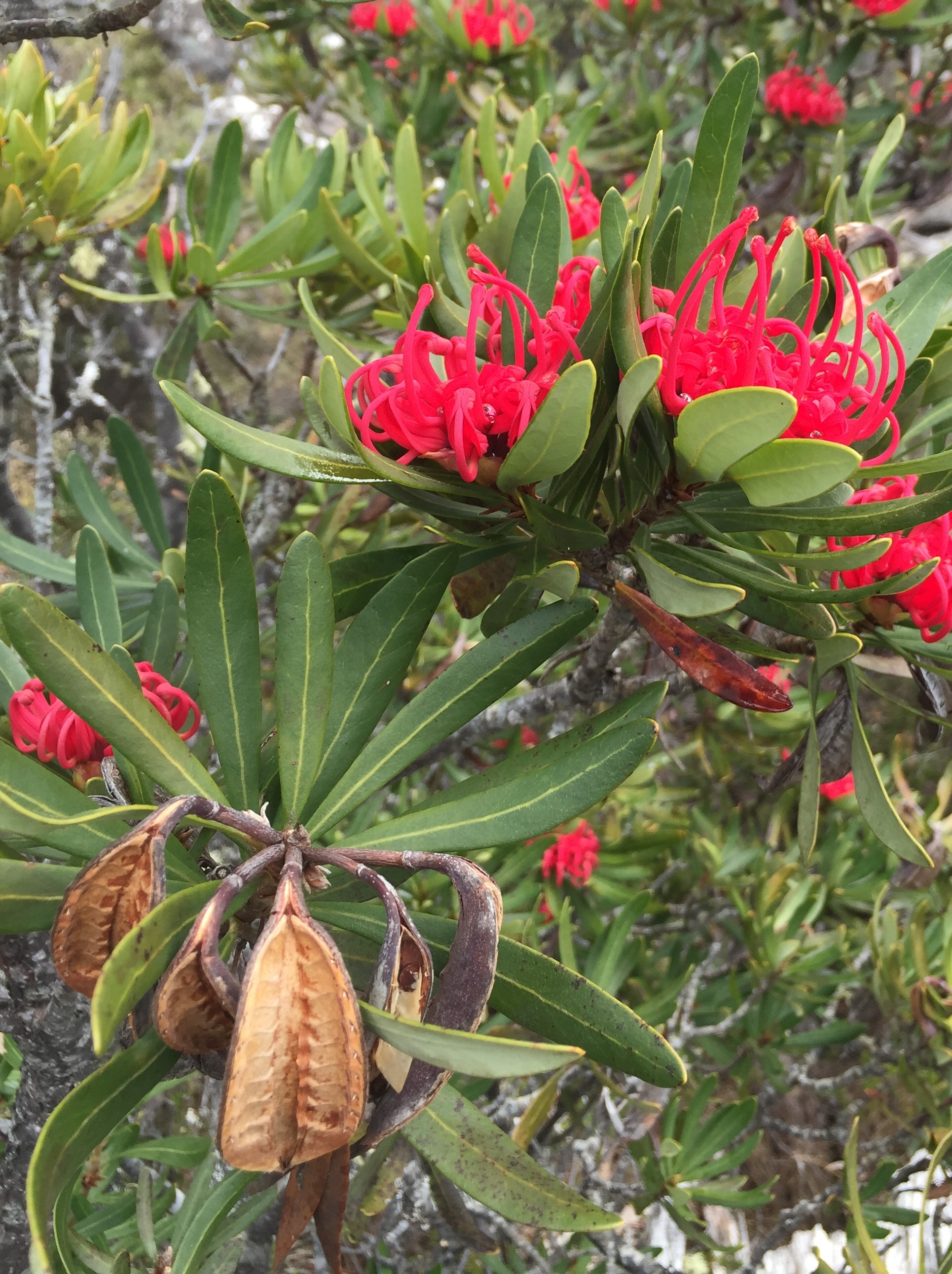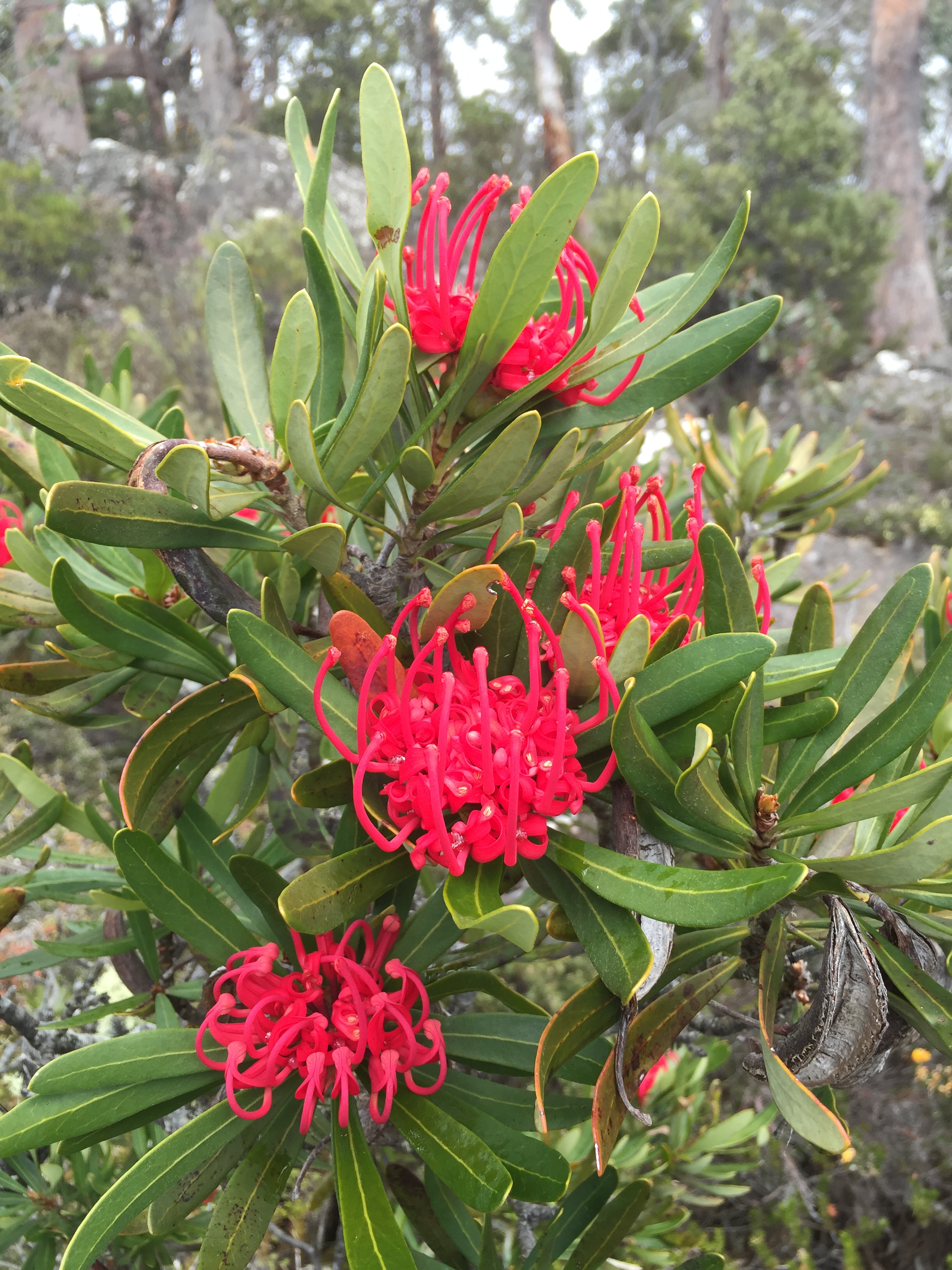Scientific Name: Telopea truncata Endemic Having a natural distribution confined to a particular geographic region
Common Name: tasmanian waratah
Family Classification (Clade): Eudicots
Family: Proteaceae
Form Description: Shrub with stout spreading branches or a small tree.
Height (m): 1 – 8
Flowers: Flower heads 5-8cm across with 15-20 small, scarlet, red or, rarely, yellow or pink florets.
Fruit: Seed follicle – dark brown woody follicle containing two rows of winged seeds.
Municipality
Plant Communities
Habitat Notes
Mountain forests at altitudes between 600 and 1200m.
Site Tolerance
Moist, Rocky, Shady
Soil Tolerance
Clay, Fertile, Loam, Well-drained
Frost Tolerance
Hardy
General Notes
As with all other Proteaceae, waratahs have a root association with a particular fungus. To ensure growth, take soil from around the base of a growing waratah and mix it into the potting mix. (The old way was to put a rock from waratah country in the bottom of the pot). Beware of transplanting diseases!! Not easy to keep alive in cultivation in the south-east of the state. Best results at higher altitudes. Grows reliably in the north-west. Well-drained cool moist sites recommended. When growing naturally on clay, the clay will be dolerite or basalt derived. Bird attracting.
Propagation Calendar
-
Flowering Month
Jan Feb Mar Apr May Jun Jul Aug Sep Oct Nov Dec -
Seed Collecting Month
Jan Feb Mar Apr May Jun Jul Aug Sep Oct Nov Dec -
Sowing Month
Jan Feb Mar Apr May Jun Jul Aug Sep Oct Nov Dec -
Cutting Month
Jan Feb Mar Apr May Jun Jul Aug Sep Oct Nov Dec
Propagation Method
Seed Information
Seed Collection
Collect the follicles once they have started hardening. It is not necessary to wait until they open.
Seed Treatment Method
Standard Scatter seed thinly on to damp potting mix. Hold seed in place by covering with more potting mix to approximately the depth of the seed size.
Seed Treatment Notes
Seed less than 6months old usually has good results. Seedlings are very susceptible to damping off.
Germination Time
3-6 weeks
Cutting & Division Information
Cuttings are possible. Tip cuttings down to hardening wood. Discard soft tips.


